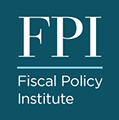Understanding Childcare Policy in New York
Childcare in New York State is unaffordable for many families, yet inadequately supports its workers. The State’s childcare costs are the third highest in the U.S., putting a strain on family budgets across the income distribution. The Bronx and Brooklyn have the costliest childcare as a share of family income of any county in the U.S.


